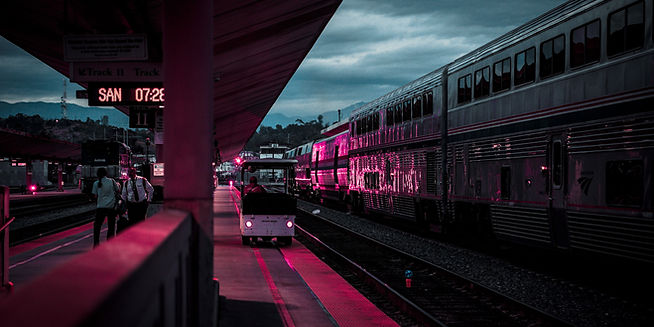Are Sleeper Trains Still Worth It in 2025? One Traveler’s Breakdown
August 1, 2025 at 1:33:01 AM

If you’ve ever dreamed of drifting off to sleep in one country and waking up in another, you’ve probably looked into sleeper trains. But in 2025, with budget airlines, high-speed rail, and flexible work schedules—are overnight trains still worth the ride?
The short answer? Sometimes.
The long answer? It depends on your priorities: comfort, budget, carbon footprint, and adventure level.
Let’s break down whether sleeper trains still make sense in today’s travel landscape, and what real travelers are saying about the experience.
What Exactly Is a Sleeper Train?
A sleeper train is an overnight rail service designed for long distances. Instead of sitting upright all night, you’re provided with a berth—a bed, bunk, or reclining seat—to sleep in.
Depending on the region, sleeper trains come in various configurations:
- Seats (recline only)
- Couchettes (basic bunk beds, 4–6 per compartment)
- Sleeping cabins (2–4 beds, more private)
- Luxury sleepers (private bathroom, upscale meals, concierge)
You’ll typically board in the evening and arrive in your destination the next morning—saving you both a night of hotel fees and precious daylight travel hours.
Where Are Sleeper Trains Still Running in 2025?
Europe and Asia continue to dominate the sleeper train game. Some popular routes still running strong:
Europe:
- Vienna → Paris (Nightjet)
- Berlin → Zurich
- London → Scotland (Caledonian Sleeper)
- Rome → Palermo (across land and sea)
- Stockholm → Narvik (Arctic Circle Express)
Asia:
- Bangkok → Chiang Mai (Thailand)
- Delhi → Varanasi (India)
- Beijing → Shanghai (China)
- Hanoi → Da Nang (Vietnam)
U.S. & Canada:
- Amtrak’s Crescent (New York → New Orleans)
- California Zephyr (Chicago → San Francisco)
- VIA Rail’s Canadian (Toronto → Vancouver)
Some routes were revived recently due to increased eco-consciousness and a return to slow travel trends.
Pros of Taking Sleeper Trains
1. You Save on Accommodation
2. Arrive in the City Center
3. It’s Surprisingly Comfortable
4. It’s Scenic and Romantic
5. Lower Carbon Footprint
Cons of Sleeper Trains
1. Not Always Cheap
2. Not All Sleepers Are Equal
3. Shared Cabins Can Be Awkward
4. Night Trains Can Be Noisy
5. Booking Systems Can Be Confusing
Cost Comparison: Sleeper Train vs Plane + Hotel
| Route | Sleeper Train | Flight + Hotel (avg) |
|-------|----------------|----------------------|
| Vienna → Paris | €89–€129 (Nightjet couchette) | €55 flight + €70 hotel = €125 |
| Bangkok → Chiang Mai | $25–$45 | $30 flight + $20 guesthouse = $50 |
| London → Edinburgh | £70–£110 (Caledonian sleeper) | £40 flight + £80 hotel = £120 |
Are Sleeper Trains Safe?
Yes. Sleeper trains are generally very safe, especially in Europe and Asia.
Safety tips:
- Lock your backpack or use a cable lock
- Keep valuables under your pillow or in your sleeping bag
- Avoid flashing expensive items
- Use a small waist pouch for passport/phone
Real Traveler Experiences
“I took the Nightjet from Berlin to Zurich. It was clean, quiet, and I slept better than I do on planes. Woke up with coffee in Switzerland—hard to beat that.” – Hanna, Germany
“India’s sleeper trains are chaotic but fun. I met locals, shared meals, and watched villages fly by from my top bunk.” – Omar, Canada
“Amtrak’s California Zephyr was gorgeous, but pricey. The roomette was cozy, but the food wasn’t great. Still, I’d do it again for the views.” – Leah, U.S.
Who Should Consider Taking a Sleeper Train?
Sleeper trains make sense if:
- You’re on a mid-range budget
- You value comfort over speed
- You prefer city-center-to-city-center convenience
- You’re environmentally conscious
- You enjoy slow travel experiences
Packing Tips for Overnight Train Travel
- Bring earplugs and an eye mask
- Use a microfiber travel towel
- Pack snacks
- Download entertainment ahead of time
- Use flip-flops or slides
Optional: sleep sack or lightweight blanket for extra comfort in couchettes.
Final Verdict: Are Sleeper Trains Still Worth It in 2025?
If you value the journey as much as the destination, sleeper trains are absolutely worth it.
They’re not always cheaper or faster—but they are:
- More relaxing
- More scenic
- More eco-friendly
- And way more memorable
In 2025, the sleeper train is still alive—and in many places, it’s making a comeback.

